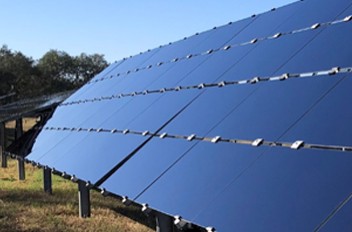President Joe Biden recently signed a new law calling for massive investment in renewable energy and the fight against climate change. The provisions include a 30% solar tax credit that will encourage more Americans to switch to solar over the next decade.
Although solar power currently generates only a small portion of the country's total electricity, it has continued to grow rapidly in recent years despite supply chain problems related to Covid-19, power shortages, imports and other obstacles.
According to data from the U.S. Energy Information Administration (EIA), a government agency that collects and analyzes energy industry data, residential solar installations in 2016 It has grown 34 percent from 2.9 GW in 2020 to 3.9 GW in 2021. And in the second quarter. In the year In 2022, residential solar posted its fifth quarterly growth record, according to the Solar Energy Industries Association.
The Pew Research Center conducted this analysis to understand the adoption of residential solar panels by Americans. It is based on data from the US Energy Information Administration and the Solar Energy Industries Association, among others.
The study is based on a survey of 10,237 American adults conducted between January 24 and 30, 2022. All survey participants are members of the Center's American Trade Panel (ATP), an online survey panel based on a national random residential address sample. Therefore, almost all American adults have the opportunity to check. The survey was weighted to be representative of the US adult population by gender, race, ethnicity, political party affiliation, education and other categories. Learn more about the ATP method.
Here are the questions and answers used for this study and their methodology.
With the new federal tax credit — and other available incentives, including state tax incentives — home solar panels are expensive. According to EnergySage, the average cost to install a residential solar panel system this year could range from $16,870 to $23,170 after applying state solar tax credits, although other factors, such as B. Solar modules, can affect the price. Since the start of the Covid-19 pandemic, supply chain constraints have driven up the cost of solar panels.
Solar power for private homes always produces less electricity than large solar power, for example. b. Solar panel farms. And all that solar energy generates only a small fraction of the electricity used in America. In the year By 2021, solar power will generate just 3% of total utility-scale electricity, far less than natural gas (38%) or coal (22%).
A January survey by the Pew Research Center found that 8% of American homeowners have installed solar panels and another 39% have seriously considered it in the past year. The survey was conducted before the 30% federal tax credit took effect in August.
In the year In the 2019 survey, the number of homeowners who said they had installed solar panels dropped from 6 percent in 2016 to 4 percent. But in January, the percentage who said they were seriously considering installing solar panels dropped 7 points from 2019.
Solar residences by region
The January survey found that homeowners in western states should consider installing solar panels on their homes, according to previous research by the center. Among Pacific Rim homeowners, 45% said they were seriously considering installing solar panels to generate electricity for their homes, and 17% had already done so. Almost half (51%) of homeowners in the Montanes region said they are serious about installing solar panels or have already installed them.
The survey is consistent with the EIA's data that California has significant potential for small-scale solar generation. Arizona and Texas are the closest to generating home electricity from solar power.
The demand for indoor solar panels varies from party to party
According to a January poll, homeowners are more likely than Democrats and Republicans to install solar panels on their homes to generate electricity (57% vs. 36%). Previous polls by the center show that Democrats are more likely than Republicans to say they haven't installed solar panels or are not seriously considering them.
When asked about possible reasons for installing solar panels, almost all owners who have installed or plan to install (92%) cite saving on electricity bills as a reason. Democrats and Republicans who are considering installing or installing solar panels on their homes are more likely to say so.
The majority of homeowners who say they have installed solar panels on their home or are seriously considering installing solar panels in January say helping the environment (81%) is a motivation. Six in ten (59%) did it because it was good for their health and their family. Another 64 percent cited tax credits for solar investments as a reason.
The federal tax credit for home solar panels was 26 percent of installation costs before the new law, and that percentage will increase to 30 percent by 2032.
Note: The questions used for this study are given below along with their answers and methods.



